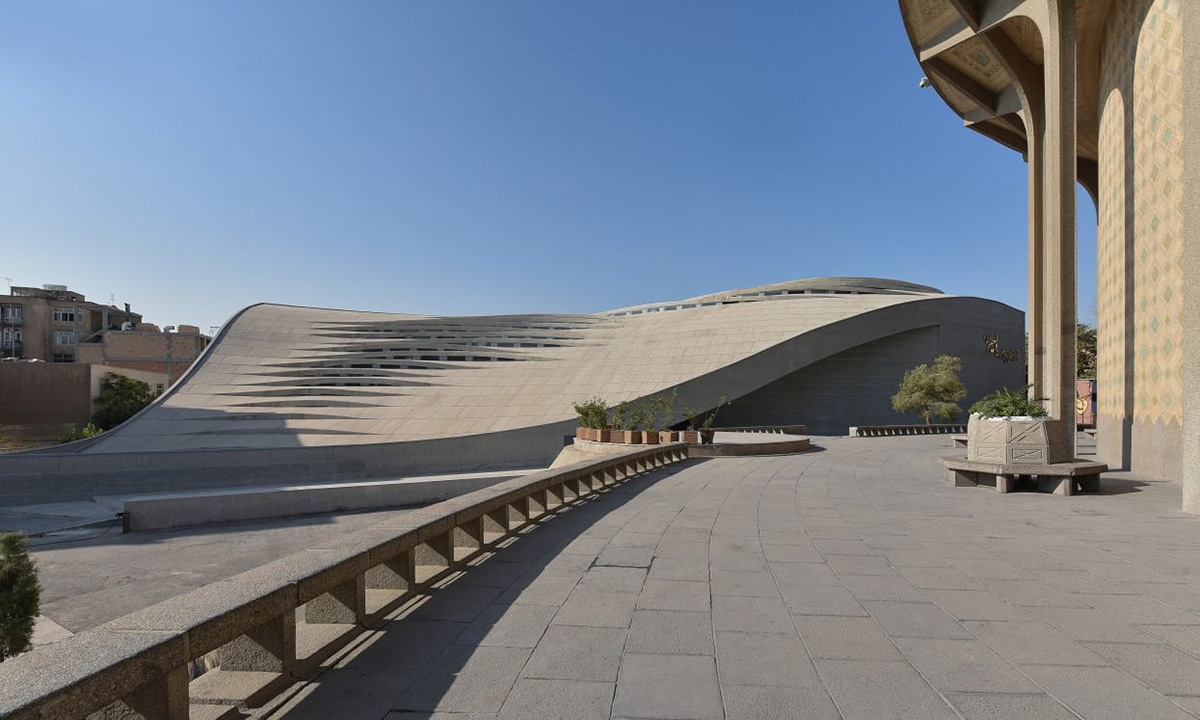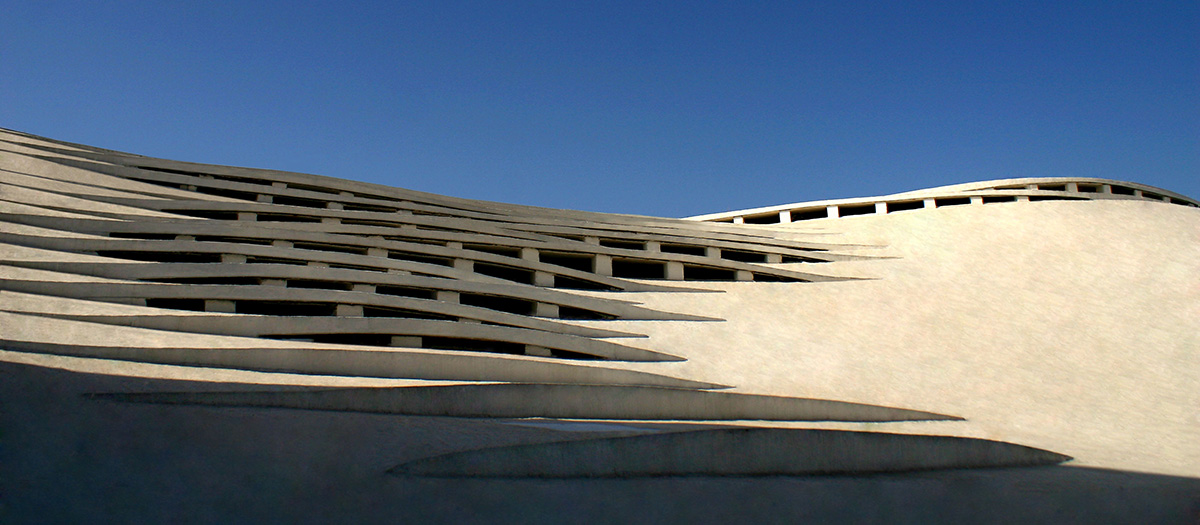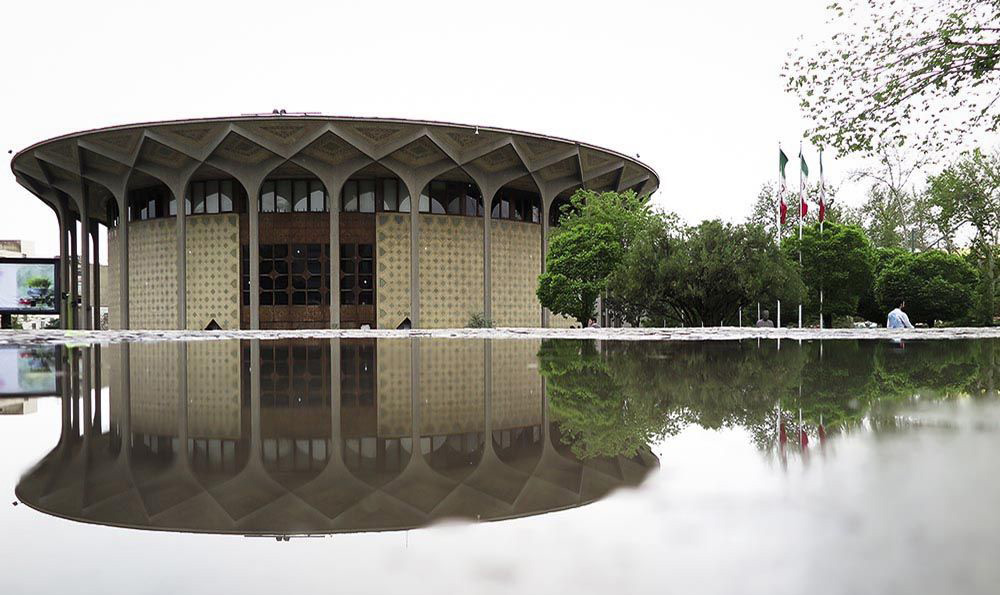Submitted by WA Contents
Modern Vali-e-Asr mosque in Tehran stirs controversy as it has no minaret or dome
Iran Architecture News - Oct 25, 2017 - 09:41 35202 views

The new Vali-e-Asr mosque in Tehran, Iran has stirred a controversy by the Iranian conservatives as the building has no minaret, or dome, and it is too daring than the existing theatre which it sits adjacent to.
Designed by Iranian architects Reza Daneshmir and Catherine Spiridonoff, co-founders of Fluid Motion Architects, the architects were commissioned to design a new mosque in 2008 sitting next to Tehran's City Theater, which was built before the 1979 revolution. The theater draws a distinctive architectural language with its tiled circular structure surrounded by external pillars.

Image © Fluid Motion Architects
But as the building nears completion, the architects faced with harsh criticism by Iranian hardliners as they don't want to recognise the building as a mosque built without a minaret and a dome, according to the Guardian newspaper, even the critics alleged that the building was officially planned to open to the public this summer after 10 years of construction work, but the local controversies have led to funding cuts, and which has left the interior design of the building incomplete.

City Theater of Tehran. Image courtesy of Like a Local Guide
"We tried to create an interaction between the mosque, which has a cultural essence, and the City theatre. We wanted to make it a cultural project that would be in harmony with its surroundings – the mosque should respond to the needs of its own time," Reza Daneshmir and Catherine Spiridonoff told The Guardian newspaper.
"The Vali-e-Asr mosque doesn’t have a minaret, nor a dome; neither did the first mosque. A mosque is a place for worship, and the Qur’an doesn’t dictate a special structure for it. It’s what it contains that is important."

Image © Deed Studio, courtesy of The Guardian
Vali-e-Asr Mosque, with a total area of approximately 25,000 square meters and 8 levels (containing 4 below ground level and 4 levels situated above ground), is positioned near the intersection of one the most important historical/cultural axis in the city of Tehran (Vali Asr St. and Enghelab St.).
"The design for this mosque was born out of a combination of evaluating circumstances, limitations and the potentials of the environment, buttressed by the values, abstract understanding, and the needs of the audience and users," the architects described their approach in a project description.
"One of the most important characteristics of this design, is its placement next to the City Theater and Daneshju Park, these two elements, allowed the function of this project to be greater than its district and manages to reach the needs of the city. The users of these structures come from all different parts of Tehran and in the age range of teenagers and college students."
"Designing this Mosque doesn’t have a correlation with meaning and identity," the architects added.
According to a local newspaper, Mashregh News, the newspaper described the building as "a mosque sacrificed for the City theatre," by adding that it had been "decapitated in the honour of the theatre". The newspaper added that: It was "an insulting, postmodern design" that is "empty of any meaning."

Image © Fluid Motion Architects
The design of a mosque was proposed 14 years ago by a different architect when Mahmoud Ahmadinejad was mayor of Tehran. But the directors of the Theatre strongly opposed the initial proposal at that time as the building was reaching at 52-metre high and was overshading the appearance of the theatre.
When the mayor of Tehran changed, the design was given to Fluid Motion, as they are best known with their dynamic, flowing and contemporary structures in Tehran. Founded in 2014, Fluid Motion harmonize the traditional elements of Persian architecture with modern design, which extends in urbane scale and becomes more cohesive with urban space, universe and history in a broader setting.
"Our biggest source for this project was the Qur’an itself," added the architects.
"We tried to design this mosque with modesty, simplicity and good faith, and not a mosque which would get its pride from its structural height. The Vali-e-Asr mosque is located near the students’ park and the City theatre. We wanted it to connect better with the younger generations."
Some media news reported that the structure of the Vali-e-Asr mosque is suitable to turn into an Islamic Cultural Centre, which gives possibilities to make some alterations.
When looked closely at the new mosque typologies, it is easy to see that these new designs do not have a dome or minaret, like Emre Arolat Architecture's Sancaklar Mosque in Istanbul, Turkey, which intended to break the design principles of the classical Ottoman mosque scheme. Pritzker Prize-winning Australian architect Glenn Murcutt completed his first mosque in Melbourne - the mosque is comprised of a series of lantern-like skylights, which are used to remind the effect of the minaret or dome.
Top image © Deed Studio, courtesy of The Guardian
